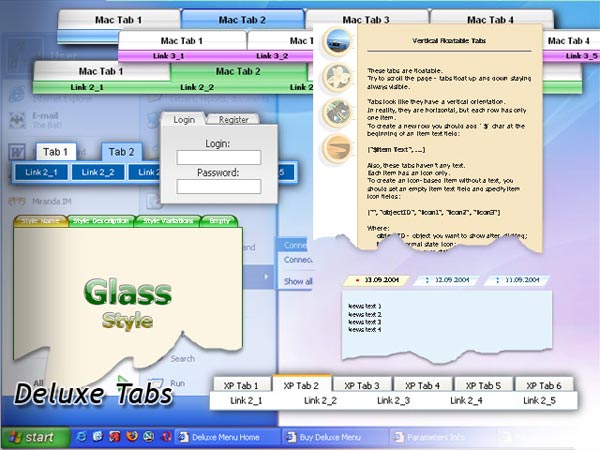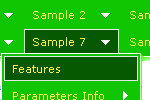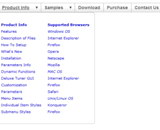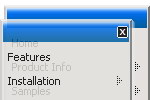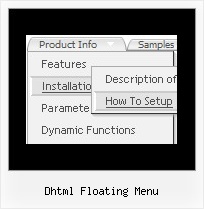Recent Questions
Q: But one of my big questions... can I use an include to pull the script for menu in?
A: If you don't want to create your menu on each page you can use aserver-side script (php, asp, vb, etc.) to generate html pages fromtemplates on your server.
You can use cross frame menu.
It allows you to build full-featured menus on the pagesthat use frame-based structure. And it's not necessary to insert any code into all the pages -just specify the additional parameters of the menu and initialize it.
To install the menu in a cross-frame mode, see more info here:
http://www.deluxe-menu.com/cross-frame-mode-sample.htmlQ: I am using deluxe-menu for the third time to create a school web site. It has worked fine on the previous two sites, but I am making a horizontal menu this time instead of a vertical menu. The menu won't align itself correctly in Firefox. I read the post in your FAQ and I set the align tag in the TD element and also the size attribute, but that didn't work.
Could you give me some suggestions. It looks fine ie IE, but not Firefox.
A: Try to specify exact value for menu width.
For example:
var menuWidth="800px";
It's necessary to specify exact value for Mozilla browsers. It helpsto position menus correctly.
Q: Is it possible to integrate simple dhtml menu tree into a framesite?
A: You should install the simple dhtml menu in a standart way inthe frame where you want to have a menu and open links in a contentframe, use the following parameter:
var titemTarget="frame";
Q: Does horizontal drop down menu works with JSP? How can I do that?
A: Deluxe Menu is the Javascript product. It means that it works on aclient side only and it doesn't depend on the server which you'reusing and it doesn't work on a server side as JSP script.
So, you can create the menu using standard html page and them movemenu code within .jsp page.

